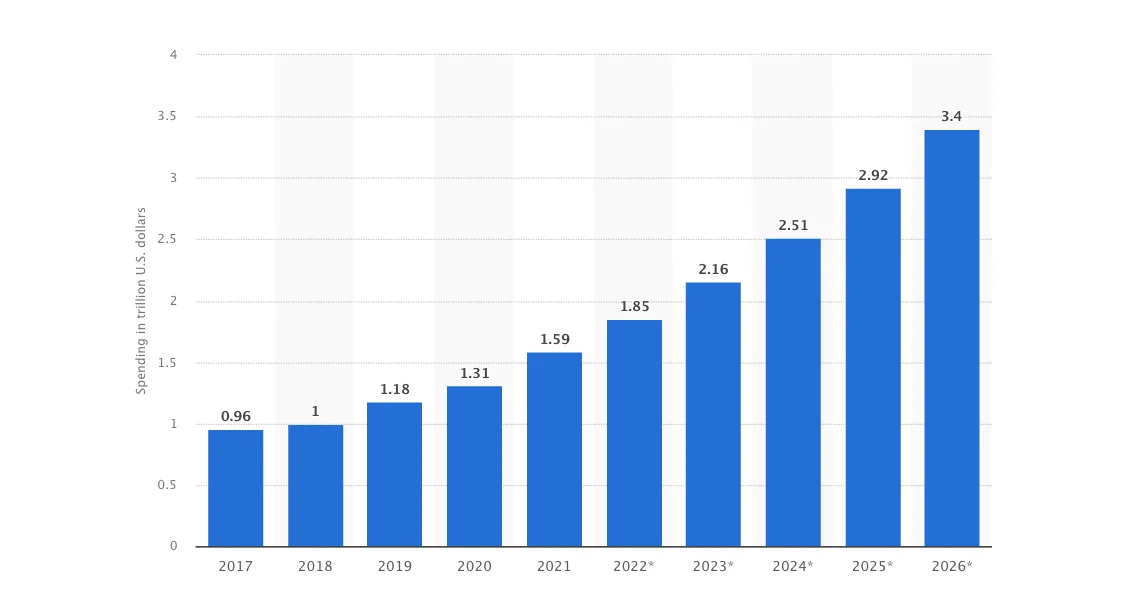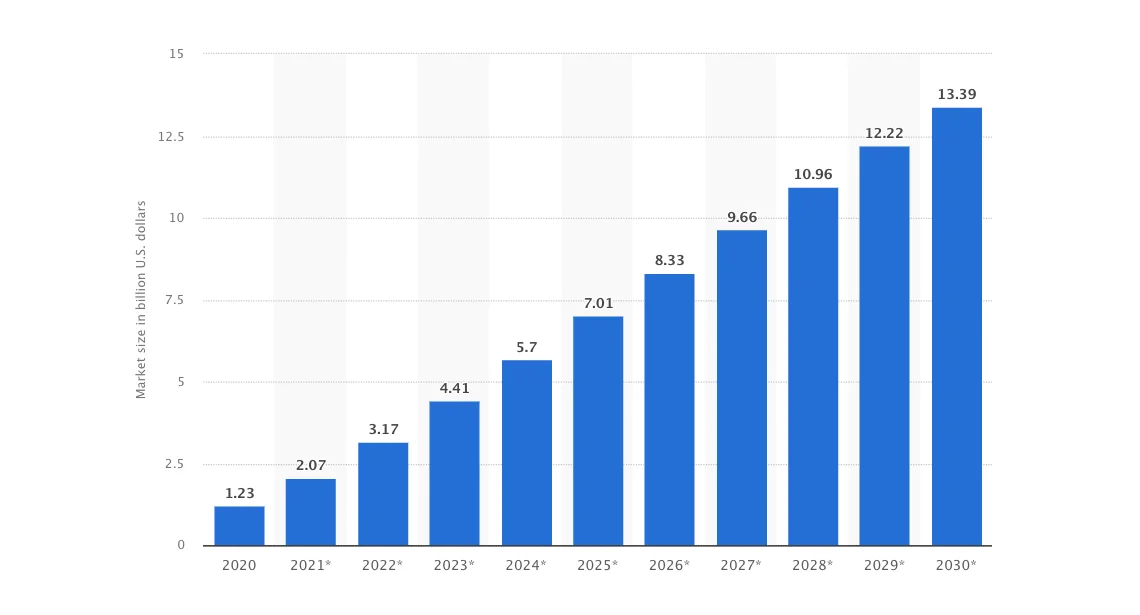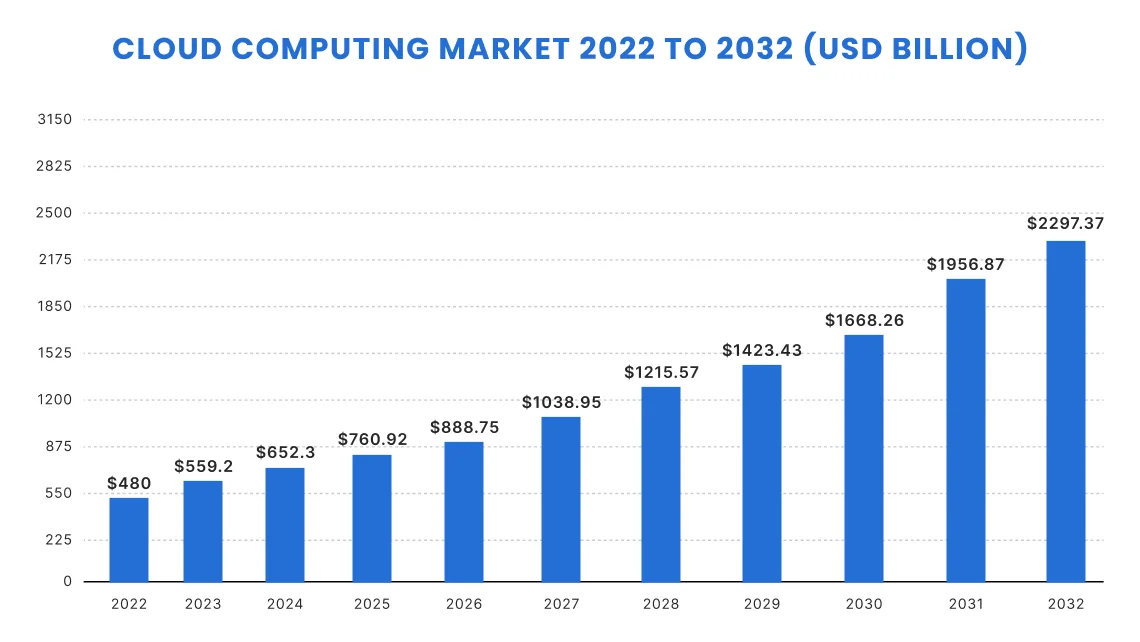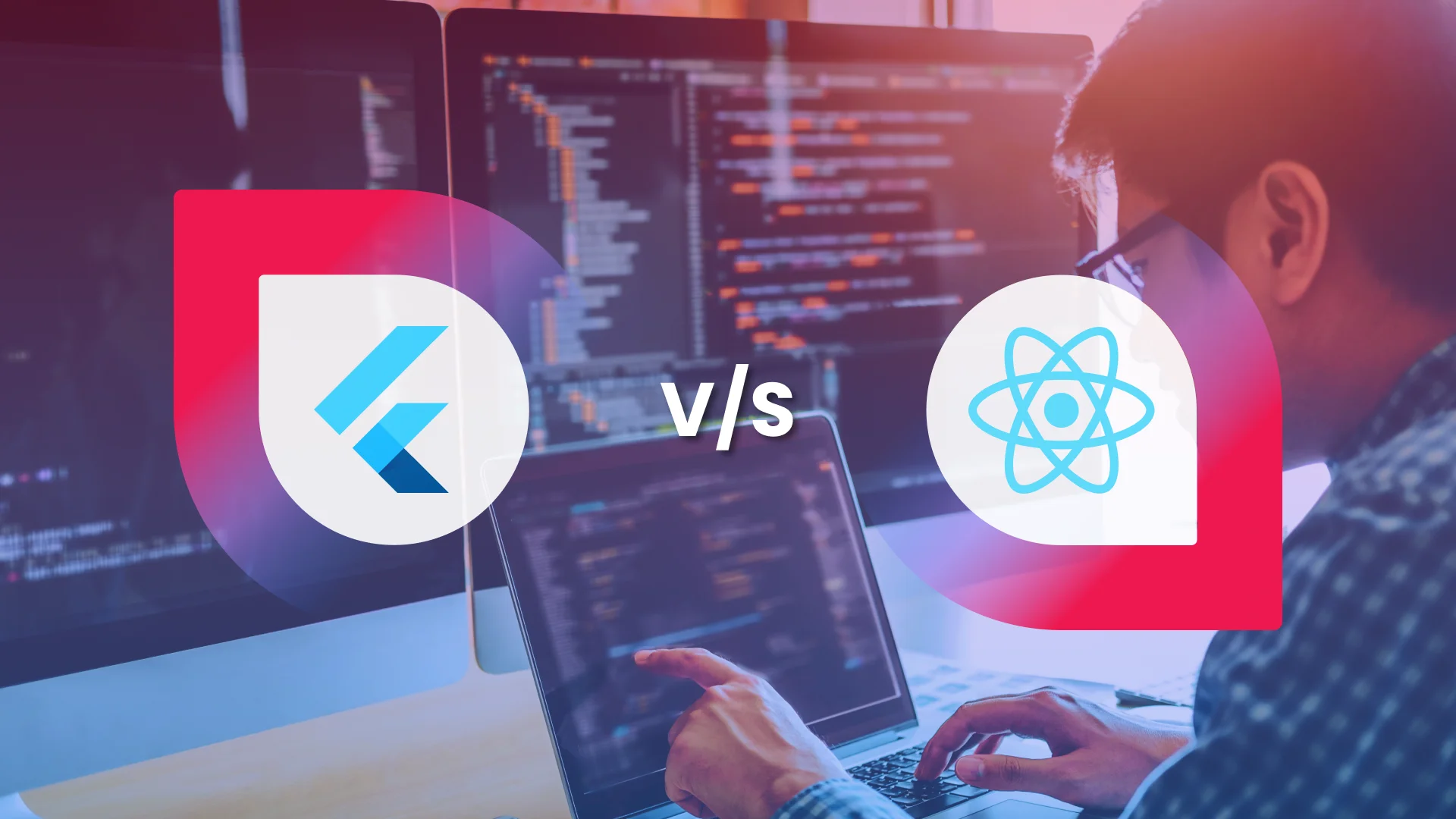Top Digital Transformation Trends to Follow in 2024
- Mobile
- October 17, 2023
Digital transformation (one of the foundations of Industry 4.0 initiatives) is being considered by businesses of all sizes and industries to capitalize on emerging technologies. This comprehensive blog post will help you make the most out of your business operations’ digital transformations, providing insights into the best digital transformation trends that you must consider.
In this fast-paced world, the majority is asking, “What’s the future of this and that?” When it comes to the revolution, especially in the business landscape, deep down we all know that the future is now, and it’s DIGITAL!
The term digital in itself is a whole new universe loaded with many technologies transforming the world and impacting our lifestyle. And when you integrate these digital technologies into the ecosystem to fundamentally change how your business operates, it’s called Digital Transformation, which comes with many benefits.
If you’re someone planning to harness the power of this digital landscape and take your business a step ahead by beginning the digital transformation journey, then knowing the trends becomes essential to keep up with the market competition.
Therefore, we have created this blog with tons of research covering the most beneficial digital transformation trends, helping your business gain the boost it needs.
Top Digital Transformation Trends to Watch Out for 2024
As per Statista survey, the spending on digital transformation globally is forecasted to reach USD 3.4 trillion by 2026.

By looking at the growing numbers in digital transformation investment, you’ll see increasing no. of businesses finding inclination towards digital transformation, but only 20-30% find success.
Of course, many reasons are associated with it, including choosing the wrong technology stack without proper understanding of trends in digital transformation, lack of clear strategy, unrealistic expectations, not having competent talents on board, and many others.
Hence, you should follow these top-listed digital transformation trends to further lead your business towards growth in 2024.
1. Advanced Digital Ecosystems and Platforms
Nowadays, everything is done digitally, and whenever there’s need to cater, we all take the help of digital solutions for quick outcomes. From using e-commerce platforms for shopping to locking/unlocking vehicles through an app, digital enablement has brought much more on our palms.
All you need is one digital transformative idea and put your resources on this path to achieve success. If we speak about implementing industry-specific digital solutions to achieve digital transformation, here are the ones:
Manufacturing and supply chain
- Businesses can implement IoT-connected digital solutions for better operational automation and enable real-time monitoring, predictive maintenance, and overall production optimization.
- Leverage blockchain technology to ensure transparent and secure supply chain management, better traceability, and reduce fraud in the manufacturing process.
Healthcare
- Organizations can build advanced Telemedicine solutions that can offer virtual consultation, remote patient monitoring, and telemedicine solutions to improve patient access to healthcare services. Know how we helped our client to take their healthcare services online by building them a feature-rich telehealth app called Waitless.
- Implementation of advanced EHR systems to seamlessly and securely store patient health data, easily access those, and share it among healthcare professionals.
- Utilizing AI in the healthcare industry for advanced medical imaging analysis, diagnosis, and predictive analytics, helping in disease detection and treatment planning.
Finance and Banking
- Implement Robotics Process Automation (RPA) solutions to automate routine and rule-based tasks, such as data entry and customer onboarding, to enhance performance with precision.
- Blockchain is often considered the best solution to improve the transparency and security of financial transactions, reduce fraud, and enhance the speed of cross-border payments.
- Utilization of AI in Finance can also benefit in analyzing customer data for personalized financial advice, investment recommendations, and tailored banking experiences.
Education
- Developing e-learning platforms, like Learning Management Systems (LMS), to avail education services to more students with interactive learning with personalized learning paths.
- Data-driven approach can help to track student performance, identify learning gaps, and avail personalized educational content.
Hospitality and Tourism
- Hotels can utilize contactless technologies connected with software systems to provide guests with contactless check-ins and smart staying experiences.
- The integration of Augmented Reality for tourism can provide tourists with virtual tours to sites, interactive maps, and more, leading to enhanced tourist experience.

2. Digital Customer Experience Solutions
Making a decision to go digital with your business-oriented app is a good step towards digital transformation, but without making an effort to deliver an appealing customer experience can be a downside.
This can be done by focusing more on designing your digital product after conducting proper UX research, branding, trends, impactful UI/UX design, and thorough UX auditing to fix the product alignment that fits well in the market.
This is one of the trends in digital transformation because creating only performant and advanced digital solutions would not help you retain users, but good UX and CX will also contribute to it. This also asks for to be updated with digital design experience trends.
3. Robotics Process Automation
Robotic Process Automation (RPA) are advanced software-based robots – also known as “bots,” that automate and streamline rule-based, repetitive, mundane, and time-consuming human tasks. Because of the business they drive, RPA solutions are often considered crucial components of the digital transformation landscape, especially for enterprises.
Because of this, the market size/investment in the RPA projects is expected to cross the mark of $13 billion by 2030. This growth is expected by seeing the inclination of many enterprise-grade companies toward the adoption of AI/ML and cloud technologies to automate their business operations and save extra associated costs.

Of course, regardless of scale, any business can leverage the benefits of RPA solutions; however, it’s most recommended to implement RPA for enterprises, which we have covered in our previous blog.
If we talk about RPA use cases, then it can change as per business requirements and industry types, which are as follows:
- Financial institutes can utilize RPA to automate invoice processing, expense report checking, boost up reimbursement processes, and bank reconciliation tasks by matching transactions, identifying discrepancies, and updating financial records.
- The customer service department can harness the power of RPA to automate order processing, and customer inquiry handling and achieve the resolution of common customer complaints by accessing the updating information across different databases.
- Healthcare organizations can implement RPA solutions to automate the extraction and validation of data for medical claims, patient-doctor appointment scheduling, acceptations, and reminder tasks, and migrating data between systems.
- Supply chain and logistics businesses can implement RPA to automate their order and shipment tracking, inventory management, supplier invoice processing, and many other processes.
- Insurance businesses can implement RPA solutions to automate claims adjudication and policy renewal processes and get intelligent underwriting support.
4. Generative AI
In this digital age where AI is taking place everywhere and transforming many business dynamics, generative AI should be one of the digital transformation trends for 2024.
If we talk about the market size of the Generative AI, then it was last valued at $10.5 in 2022 and is expected to grow to $191.8 billion by 2032, at a CAGR of 34.1%.
But the question is how businesses can adopt this generative AI trend to make the most of it?
Businesses can adopt generative AI solutions to harness its transformative potential and derive maximum value. To do so, you also have to understand and figure out the best Generative AI models that are best for your requirements, from models like Generative Adversarial Networks (GANs), Transformer-based Models, Diffusion Models, Variational Autoencoders (VAEs), Multimodal Models, Large Language Models (LLMs), and Neural Radiance Fields (NeRFs).
After learning about the Generative AI models, you can use such for these various business applications, such as content creation, intelligent and dedicated customer service, design pieces creation, documentation creation, legal processes automation, financial process assessment, and automation, to deliver personalized customer experience, and many more.
Hearing the success of generative AIs like ChatGPT, Synthesia AI, BERT, and many others, you may want to build generative AI like them. For that, you’d also need help from our data science and AI/ML expertise, which we can provide you with.
5. Intelligent Applications
Thanks to the digital revolution, the applications we use in our everyday lives today are also advancing and making our lives easier. Now, let’s talk about intelligent features that you can add to your mission-critical applications to make them intelligent.
AI-powered Chatbots: Whether you’re a business offering 24/7 service with staff availability or working on regular shifts, having chatbots integrated into your app will always benefit your business, at least give assurance to your customers that someone’s there to listen to the issues they are facing. And if that’s an AI-powered chatbot like Repika, then a plus point over the first. This feature will actually benefit the online shopping apps.
Voice-assistance: Apps with many accessibility features have more scope to target more users you target and even the ones you don’t. Such applications give users a hands-free experience, allowing them to tell the app what it has to do for them, like “Hey Alexa, show me some good suggestions for the washing machine!”
You can even make your application smart enough to proactively update you with each and every activity that has been going on in an app. For example, “Hey Smith, you just now have received one message from James asking you to join tonight’s party.” “Please tell me what I should reply to?” And based on your command, it will reply to the recipient.
Business applications can take the most benefit from this feature and make their voice-assisted app fully proactive to help you manage everything from email reading to answering it and even scheduling meetings through voice command. Just like our client Will.I.AM’s brand I.AM+ product “Omega for Enterprises” is doing.
As per the MARKETSANDMARKETS, the voice assistant application market size was last valued at $2.8 billion in 2021 and is expected to grow to $11.2 billion by 2026, that too, at a CAGR of 32.4%.
Intelligent Search: In this world of everything being personalized, implementing intelligent search in your application with the help of AI, ML, NLP, Computer Vision, and Semantic Search can help to provide such to your customers. Implementing this search intelligence into your enterprise content source can help very well in search data analytics for both structured and unstructured formats for better search engine training.
In 2024, this is also an opportunity not just to implement in your enterprise search engine but also into your digital products to be used by your target customers for their better CX.
These are just a few, but using AI/ML and data science technologies, you’ll find many features to integrate into your application to make it an intelligent one to offer services modern users would need.

6. Cloud Acceleration
Cloud adoption has been the most controversial technology for the digital transformation trends since its introduction. It should be as it offers the utmost conveniences to access their data on-demand from any device and any location.
It offers the flexibility corporates need to adjust their bandwidth to avail online services to the users without any lag, whether it’s a sudden rise or drop, with cloud auto-scaling enablement and access to the managed cloud computing services.
Furthermore, businesses are nowadays relying more on the cloud due to its offerings for cutting expenses, improving accessibility, and much more.
The rise of 5G networks across the globe will surely lead to the increasing adoption of the cloud strategy, multi-cloud strategy, and more towards cloud enablement.
As per the Precedence Research, the cloud computing marketing size is expected to hit $2297.37 billion by 2032 at a CAGR of 17 from $480 of valuation marked in 2022.

7. Decentralized Enablement
Decentralization enablement is a crucial aspect of the digital transformation trend, driven by emerging technologies that distribute power, data, and decision-making across networks rather than centralized authorities. In 2024, we can see the increased adoption of the decentral will take place with the implementation of technologies like Blockchain and Metaverse.
Blockchain, a decentralized ledger comes with stronger proposals for the secured record-keeping for the various industries, including finance, supply chain, healthcare, real estate, etc.
When talking about the blockchain trend, its popular solutions adopted are Decentralized Finance (DeFi), Smart Contracts, Decentralized Autonomous Organizations (DAOs) (which are run by smart contracts and governed by community members), and many others.
Therefore, the market size of the blockchain technology was last valued at $4.8 billion in 2022 and may extend to $2334.46 billion by 2032 at a CAGR of 85.7% for the timeline from 2023-2032.
AR/VR technology adoption has been the trending topic for many years now due to their alluring real world escaping and making this world the part of the digital world with immersive experiences.
But this Metaverse trend is taking the digital transformation game beyond AR/VR enablements. It creates a totally new universe for the users to take an interest in and interact with the digital environment.
According to the Statista survey, the Metaverse market may expect a rise in its user base to 2,633.0M, and market volume may increase to $507.8bn by 2030.
In 2024, we may expect this Metaverse trend to take its steps towards realization. Hence, fortune businesses like Apple, Microsoft, Google, Facebook, and many others are investing in it to reap their benefits from this advanced opportunity.
8. Cybersecurity
Cybersecurity is a solution that is not like once implemented, then no need to worry. It asks for constant efforts and utilizing best practices to protect the digital ecosystem and endpoints from cyber threats. On the other hand, data privacy is the practice of being careful to safeguard sensitive data from getting leaked.
In this digital realm, with the emergence of more conveniences loopholes will come. And therefore, in 2024, cybersecurity can’t be overlooked. This asks for having a proactive cybersecurity team and even the enforcement of stricter data privacy regulations and consumer awareness to secure and ethically handle data.
So, along with rolling out digital transformation advances, it’s a must to have cybersecurity and data privacy in place to thrive flawlessly in this digital world.
9. Digital Twins
A Digital Twin is a contextualized digital representation of any real-life object; it can be a process, physical object, or person in the virtual world. You can say that Digital Twin is the next big thing in the business realm. It utilizes AI/ML technologies, synthetic data modeling, and many technologies from the Web 3.0 world to deliver next-gen intelligent analytical and operational solutions.
In 2024, you may see these digital twin trends forming the shape of an enterprise metaverse that helps to create an immersive environment, replicating and connecting the enterprise entities to achieve intelligent decision-making.
McKinsey, in its one survey, indicated that around 70% of C-suite technology executives are considering digital twins as an opportunity to delve into and make considerable investments.
New Year, New Goals: How MindInventory Can Be Your Digital Transformation Partner
Many digital transformation trends will emerge and go, but the ones listed here are going to stay here for many years to come. Surely, this is the assurance for your safe investment to take your business to new heights, and MindInventory can be your companion.
With a designated digital transformation team onboard, we can help take your business processes to the digital level by offering strategic consulting and planning, cutting-edge digital product development, and dedicated maintenance support.
From ideation to implementation and beyond, we are committed to transforming your vision into a digital reality that propels your business toward sustained success by offering our top-class digital transformation services. So, what are you waiting for; partner with us to redefine what’s possible in the realm of digital transformation for your business.













